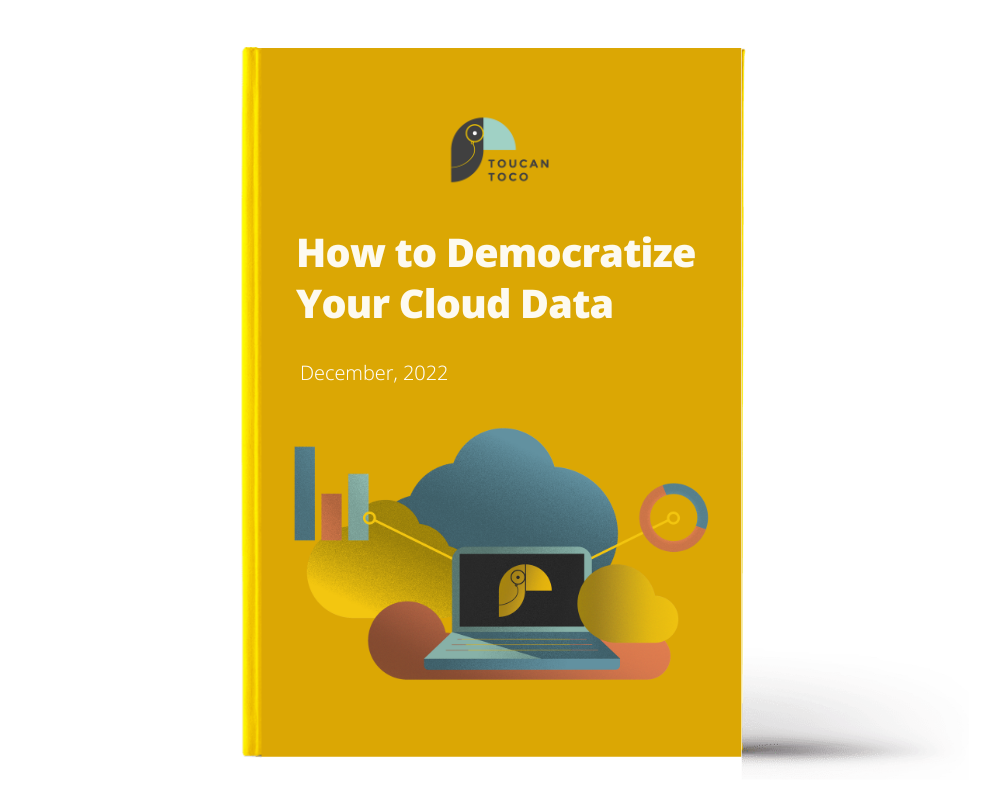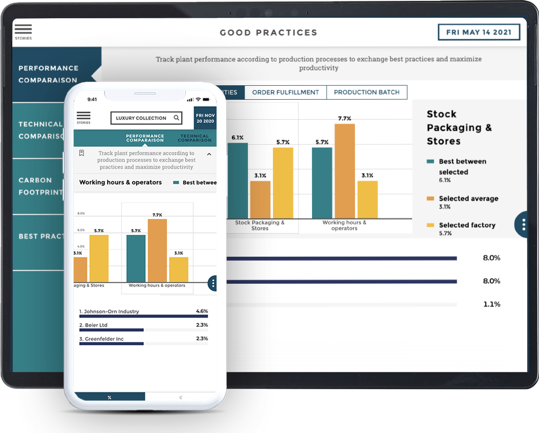Cloud analytics are making data easier for everyone to understand and exploit — a vital step toward true data democratization.
But it's not enough: in order to become truly data-driven, organizations need to ensure that their analytics can be leveraged seamlessly, even by people who don’t see themselves as data-savvy. That requires not just the adoption of cloud analytics, but also the deployment of tools to ensure that cloud data infrastructure is adopted and used as effectively as possible at all levels of their operations. That’s where data storytelling comes in. By integrating powerful analytics into clear visualizations, intuitive dashboards, and other easy-to-use tools, data storytelling ensures that your data isn’t just accessible from anywhere — it’s also immediately comprehensible and usable by anyone, even if they don’t have a degree in data science. For organizations that are serious about cloud analytics, data storytelling is the logical next step in their journey.
Here are 5 ways you can make the most of your cloud analytics by using data storytelling.
1. Empower non-technical teams.
With flexible cloud-based data infrastructure you can bring analytics within reach of your entire team. But data storytelling goes further, allowing you to surface exactly the data that’s needed for any given use-case, in formats that can be easily understood and acted upon according to the specific needs of the user. That empowers non-technical teams to access cloud data on demand, create and execute queries, and make better
business decisions across every aspect of their professional lives.
And that’s not all: because your teams can unlock the power of data without needing third-party support, your technical teams can maintain their focus on core priorities:
- In-house data experts can focus on conducting more sophisticated analyses
- Data scientists and dev teams can stay focused on doing what they do best, and deploying their skills where they’ll deliver most value, rather than having to take time to help other teams run simple data analyses that don’t necessarily require advanced-level skills and experience.
2. Protect your data
Using data storytelling, users can access data via visualization tools and storytelling dashboards that integrate natively into your cloud solution, with no need to access raw data directly. That means there’s no need to worry about data security: if your data storytelling app uses secure connections to interface with your chosen data lake or data warehouse, the data itself never leaves your secure cloud hosting service.
There’s no need to download data and manually integrate it into on-site systems, either, and that means less scope for data breaches, as well as a guarantee that all your teams are always working with the most up-to-date and consistent version of the data they need.
And because your cloud analytics are mediated by intuitive dashboards, data novices never have to deal with raw data, worry about misinterpreting data or applying the wrong analytic tool, or run the risk of accidentally compromising, muddling, or deleting important source information.
3. Break down data silos
Cloud data analytics go a long way into breaking down data silos, with data warehousing services such as Snowflake helping organizations to retrieve and query well-organized and intelligently formatted cloud data. But even in the cloud era, companies often need to centralize data from various sources — including customer behavior data, IoT usage statistics, transactional information from retail stores, and more. That can lead to the adoption of mixed on-premise and cloud-based data systems, and conventional cloud analytics solutions can’t easily bridge that gap. Data storytelling overcomes this by letting organizations draw data from different sources, then showcasing it in a single unified dashboard. End-users never have to worry about where a particular bit of data is stored — they just make the most of the story it tells. That levels up cloud analytics’ inherent ability to break down data silos: data storytelling fuses disparate sources into a single source of truth, giving your teams an accurate and holistic view of the situation, and ensuring everyone in your organization is able to see the full picture.
4. Deliver data on the fly
The cloud gives you access to data on an anytime, anywhere basis. But your team doesn’t just need data access — they also need to be able to use and interpret that data effectively. That requires not just powerful cloud analytics, but also mobile-friendly, easy-to-use tools that can support the process of analysis by digesting data and serving it up on an as-needed basis. Data storytelling makes your cloud data not only accessible but useful, no matter where the end-user is or what device they’re using. Organizations can create responsive or mobile-first visualizations to enable field teams to gain the benefits of enterprise-grade data analytics, along with intuitive UX to enable ease of use on any device. Your field teams no longer need to pull out a laptop — they can simply peek at their phones to get the immediate, actionable insights they need to identify a lead or close a deal.
5. Adapt your analytics as your needs evolve
A big advantage of cloud data storage is how easy it is to scale up and down depending on your needs. Organizations need their analytic tools to be equally scalable and flexible to ensure that data can be put to work quickly and easily, no matter how fast their business grows or how their operational needs evolve. That requires data visualizations that are every bit as flexible and agile as the rest of their cloud infrastructure. The data visualization dashboards used in data storytelling solutions enable that at both the macro and micro levels. Your organization’s growth will never outpace your data analytics capabilities, and you’ll never wind up paying for more than you really need. And individual teams or end-users can also adapt and change, recalibrating their data visualizations and dashboards on the fly as their needs evolve.
We go over this and many more topics in our latest ebook about data storytelling and cloud analytics working together to democratize data in organizations.





